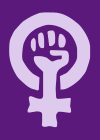Abuse during childbirth
Abuse during childbirth (or obstetric violence) is the neglect, physical abuse and lack of respect during childbirth. This treatment is regarded as a violation of the woman's rights. It also has the affect of preventing women from seeking pre-natal care and using other health care services.[1] Abuse during childbirth is one form of violence against women.
Investigations into the prevalence of these practices have been conducted by the World Health Organization. Their studies demonstrate that this is a global problem. Women experience disrespectful, abusive or neglectful treatment during their childbirth when the birth occurs in medical and health facilities. The abusive relationship and trust between women and health providers can create a great reluctance to obtain medical assistance during birth. Disrespectful and abusive treatment can be experienced during pregnancy. During childbirth, a woman is very vulnerable and cannot protect herself. The results of this abuse can have very negative consequences for the infant and the mother.[2]
WHO has found situations and circumstances where health facilities have participated in physical abuse, the withholding of pain medication, disrespect, humiliation, lack of confidentiality, lack of privacy, lack of informed consent, forced sterilization, refusing to be admitted to the facility, neglect during the birth, involuntary medical procedures, lack of confidentiality, withholding medical information and detention of the women at the facility because she is unable to pay the facility. In addition, the neglect during childbirth has resulted in life-threatening complications that could have responded to appropriate medical intervention.[2]
Some women are more likely to experience abuse during childbirth. Adolescents, migrant women, women infected with HIV, and ethnic minority women are more likely than others to receive abuse.[2][3][4][5][6][7]
The term "obstetric violence" is particularly used in Latin American countries, where the law prohibits such behavior. Such laws exist in several countries, including Argentina, Puerto Rico and Venezuela.[8]
Examples
Some sources refer to North American obstetricians and gynecologists, especially between the 1950s and 1980s, practicing what was called the husband's stitch: placing extra stitches in the woman's vagina after the episiotomy or natural tearing, supposedly to increase the husband's future sexual pleasure and often causing long-term pain and discomfort to the woman. However, there is no proof that such a practice was widespread in North America,[9][10] but mentions of it frequently appear in studies about episiotomy, also in other American countries such as Brazil.[11]
References
![]()
- ↑ "Prevention and elimination of disrespect and abuse during childbirth". World Health Organization. Retrieved 3 August 2017.
- 1 2 3 "The prevention and elimination of disrespect and abuse during facility-based childbirth" (PDF). World Health organization. Retrieved 3 August 2017.
- ↑ Sando, David; Kendall, Tamil; Lyatuu, Goodluck; Ratcliffe, Hannah; McDonald, Kathleen; Mwanyika-Sando, Mary; Emil, Faida; Chalamilla, Guerino; Langer, Ana (1 December 2014). "Disrespect and Abuse During Childbirth in Tanzania: Are Women Living With HIV More Vulnerable?". Journal of Acquired Immune Deficiency Syndromes (1999). 67 (Suppl 4): S228–S234. doi:10.1097/QAI.0000000000000378. PMC 4251905. PMID 25436822.
- ↑ Okafor, Innocent I.; Ugwu, Emmanuel O.; Obi, Samuel N. (1 February 2015). "Disrespect and abuse during facility-based childbirth in a low-income country". International Journal of Gynaecology and Obstetrics. 128 (2): 110–113. doi:10.1016/j.ijgo.2014.08.015. PMID 25476154.
- ↑ Kujawski, Stephanie; Mbaruku, Godfrey; Freedman, Lynn P.; Ramsey, Kate; Moyo, Wema; Kruk, Margaret E. (1 October 2015). "Association Between Disrespect and Abuse During Childbirth and Women's Confidence in Health Facilities in Tanzania". Maternal and Child Health Journal. 19 (10): 2243–2250. doi:10.1007/s10995-015-1743-9. PMID 25990843.
- ↑ Kujawski, Stephanie A.; Freedman, Lynn P.; Ramsey, Kate; Mbaruku, Godfrey; Mbuyita, Selemani; Moyo, Wema; Kruk, Margaret E. (1 July 2017). "Community and health system intervention to reduce disrespect and abuse during childbirth in Tanga Region, Tanzania: A comparative before-and-after study". PLOS Medicine. 14 (7): e1002341. doi:10.1371/journal.pmed.1002341. PMC 5507413. PMID 28700587.
- ↑ Bohren, Meghan A. "Continuous support for women during childbirth". Cochrane Database of Systematic Reviews. doi:10.1002/14651858.CD003766.pub6.
- ↑ WHO (2015). "Sexual and reproductive health: Prevention and elimination of disrespect and abuse during childbirth". who.int. World Health Organization. Retrieved 21 October 2017.
- See also:
- WHO (2015). WHO statement: The prevention and elimination of disrespect and abuse during facility-based childbirth (PDF). Human Reproduction Programme (HRP). Geneva, Switzerland: World Health Organization. WHO/RHR/14.23.
- See also:
- ↑ Dobbeleir, Julie M.L.C.L.; Landuyt, Koenraad Van; Monstrey, Stan J. (May 2011). "Aesthetic surgery of the female genitalia". Seminars in Plastic Surgery. Thieme. 25 (2): 130&ndash, 141. doi:10.1055/s-0031-1281482. PMC 3312147. PMID 22547970.
- ↑ Northrup, Christiane (2006). Women's bodies, women's wisdom: creating physical and emotional health and healing. New York: Bantam Books. ISBN 9780553804836.
- ↑ Diniz, Simone G.; Chacham, Alessandra S. (2004). ""The Cut Above" and "the Cut Below'": the abuse of caesareans and episiotomy in São Paulo, Brazil". Reproductive Health Matters, special issue: Sexuality, Rights and Social Justice. Taylor and Francis. 12 (23): 100&ndash, 110. doi:10.1016/S0968-8080(04)23112-3.
